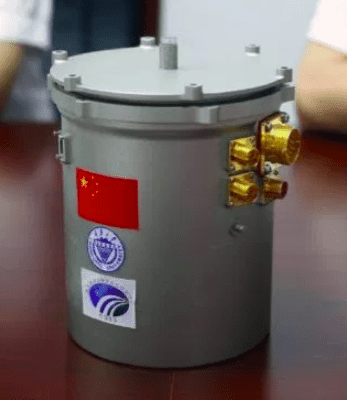The Soviet Republic was the first country to send a man into outer space. The US landed the first man on the Moon. Now, China wants to check its first as well: they want to grow plants (and silkworm) on the Moon.

According to a new announcement, seeds of potatoes and Arabidopsis — a small flowering plant related to cabbage and mustard, often used in research — will be planted on the Moon. Along with silkworm cocoons, the seeds will be launched with Chang’e-4 lander and rover. China’s first probe to the far side of the moon is currently scheduled for December.
The seeds will be placed inside a cylindrical tin made from a special aluminum alloy. The tin is 18 cm tall, with a diameter of 16 cm, a net volume of 0.8 liters and a weight of 3 kilograms. It also contains water, air, and a special nutrient mixture, as well as a camera and a data transmission system. If everything goes according to plan, the seeds will be planted, they will grow and blossom and the entire process will be captured on camera.

While potatoes and Arabidopsis have been grown before on the International Space Station and the Tiangong-2 space lab, growing them on the moon will be much more difficult. Maintaining the temperature in an acceptable range will be particularly tricky.
“We have to keep the temperature in the ‘mini biosphere’ within a range from 1 degree to 30 degrees, and properly control the humidity and nutrition. We will use a tube to direct the natural light on the surface of Moon into the tin to make the plants grow,” said Xie Gengxin, chief designer of the experiment.
Liu Hanlong, chief director of the experiment and vice president of Chongqing University, which spearheads the project, says it will offer much-needed insight about how plants can be grown on the Moon.
“Why potato and arabidopsis? Because the growth period of arabidopsis is short and convenient to observe. And potato could become a major source of food for future space travelers,” said Liu. “Our experiment might help accumulate knowledge for building a lunar base and long-term residence on the Moon.”
China reportedly plans to start a ‘mini biosphere’ as part of its efforts to develop a research station and perhaps even a permanent base on the dark side of the Moon. The dark side of the Moon is an excellent place for a research base as it is shielded from electromagnetic interference from Earth and it’s an excellent vantage point to study solar bursts and the deeper parts of space.
Of course, it’s also a great place to study the feasibility and challenges of an out-of-Earth research base.
“Our experiment might help accumulate knowledge for building a lunar base and long-term residence on the Moon,” Professor Liu Hanlong, chief director of the experiment and vice president of Chongqing University, told Xinhua news agency.

This particular project was chosen over more than 200 candidates. If it succeeds, it will be an important landmark of China’s space ambitions. China spends some $3 billion a year on its space projects, significantly less than America’s $21 billion — but even so, China is catching up fast.
The Chang’e-4 probe will also carry scientific payloads developed by the Netherlands, Sweden, Germany, and Saudi Arabia. For instance, a small Swedish analyzer will monitor the interactions between the solar winds and the Moon’s surface.
“The Chinese and Dutch low-frequency radio spectrometers might help us detect 21-cm hydrogen line radiation and study how the earliest stars were ignited and how our cosmos emerged from darkness after the Big Bang,” said Chen Xuelei, an astronomer with the National Astronomical Observatories of the Chinese Academy of Sciences.
It’s an ambitious project, which not only signals China’s growing ambitions but also its willingness to collaborate with other countries — this can only be an encouraging sign.


